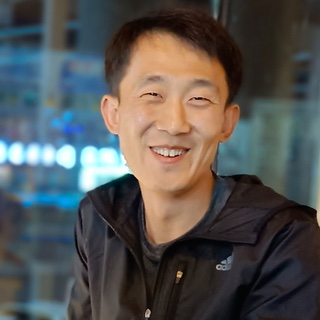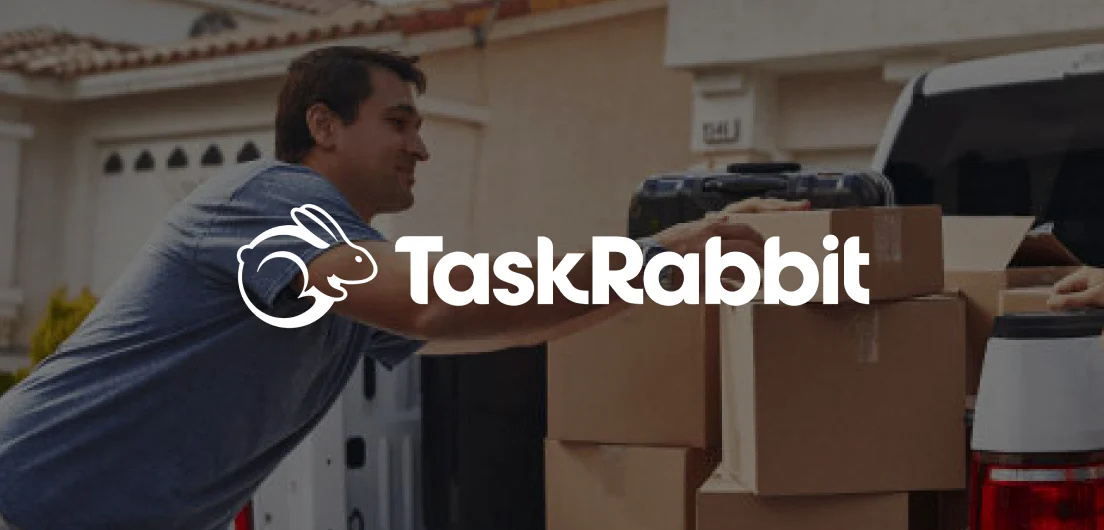You need to hire. We're here to help.
Find and hire top Full Stack Developers, fast.
Get matched to 3 highly-qualified Full Stack Developers in minutes.
Hire Top Full Stack Developers.png)
.png)
.png)
How to hire top Full Stack Developers at Braintrust
Post a job
Create an account and publish your job posting free of charge.
Review candidates
Manage and hire top talent instantly.
Get to work
We simplify onboarding, invoicing, compliance, and more.
Meet our Full Stack Developer community
Braintrust is a user-owned talent platform created by and for the world’s top talent. This includes a talented network of experienced Full Stack Developers available for hire.
Looking for Work

Peter Holcomb
- React Native
- Web
- JavaScript
Looking for Work

Dan Turner
- Java
- DevOps
- PHP
Looking for Work

Juan Orozco
- React
- Full Stack Engineering
- JavaScript
How to hire Top Full Stack Developers

Overview
Hiring a Full Stack Developer involves finding a professional who can handle multiple facets of software development, from front-end interfaces to back-end infrastructure. The requirements and expectations can vary greatly depending on the size of the company, the nature of the project, and the type of employment.
In a startup environment, Full Stack Developers often have to wear many hats. They may need to handle everything from setting up the server architecture, designing and managing databases, writing server-side logic, to creating user-friendly front-end interfaces. Due to limited resources and a rapid development pace, they may need to quickly learn new technologies and adapt to changing requirements. Flexibility, adaptability, and a wide range of technical skills are highly valued in such settings.
On the other hand, larger companies usually have more specialized roles. A Full Stack Developer in a big corporation might still work across the stack, but they might have more focused responsibilities and work in collaboration with other specialized developers. The technologies and methodologies they use are often well-established, and there may be less flexibility to adopt new tools or practices. However, they will usually have more resources for learning and development, and a clearer career progression path.
The hiring process may also differ based on whether you're hiring for a full-time position or on an hourly basis. Full-time Full Stack Developers are typically more involved in the company's long-term projects and strategic direction. They're usually expected to participate in all stages of the software development lifecycle and may also have roles in team collaboration, mentorship, and project management.
Hiring a Full Stack Developer on an hourly basis or as a contractor can be a good option for short-term projects or when you need extra help to meet a deadline. These developers are typically hired to accomplish specific tasks or projects and are less involved in strategic decisions or long-term planning. However, they can provide valuable expertise and flexibility, and can be a cost-effective option if your development needs are variable or uncertain.
In any case, hiring a Full Stack Developer requires a careful evaluation of technical skills, problem-solving abilities, understanding of software development methodologies, and soft skills like communication and teamwork. It's important to consider your company's unique needs and circumstances to find the right fit.
Technical Proficiency
With years of experience under their belt, a Full Stack Developer is expected to be proficient in a variety of technologies, both front-end and back-end. On the front-end, they should be skilled in HTML, CSS, and JavaScript, which are the foundational technologies of the web. Beyond that, familiarity with JavaScript frameworks like React, Angular, or Vue.js is often required due to their increasing use in modern web development. Knowledge of CSS pre-processors like Sass or Less can be a plus, as well as experience with front-end build tools such as Webpack or Gulp. On the back-end, they should know at least one server-side programming language like Python, Ruby, Java, or Node.js, along with the associated frameworks such as Django, Rails, Spring, or Express.js. A good understanding of RESTful API design is also important for server-side development.
Understanding of MVC and Other Design Patterns
The Model-View-Controller (MVC) design pattern is a crucial concept in full-stack development. It helps to separate an application's data, user interface, and control logic into three distinct components, thus promoting code organization and reusability. Other design patterns, like the Observer or Singleton patterns, can also be critical for writing efficient, scalable, and maintainable code. Full Stack Developers should be able to leverage these patterns to solve common software design problems. Knowledge of Object-Oriented Programming (OOP) principles and Functional Programming concepts is often expected, as they form the basis for many design patterns.
Experience with Databases and Servers
Full Stack Developers should be comfortable with both SQL and NoSQL databases. SQL databases such as MySQL, PostgreSQL, and Oracle are often used for structured data, while NoSQL databases like MongoDB, CouchDB, or Cassandra are used when dealing with unstructured data. Understanding the strengths and weaknesses of each type, and knowing when to use them, is key. Additionally, they should be proficient in database design and normalization. Knowledge of caching mechanisms like Redis or Memcached can also be beneficial. On the server side, experience with server technologies like Apache, Nginx, or Node.js is necessary. A good Full Stack Developer should also understand server architecture and be able to handle tasks like setting up a server, handling server security, and managing server resources.
Version Control/Git
Version control is vital to the software development process. It allows developers to track changes to the code, collaborate efficiently, and revert to a previous version of the code if necessary. Git is the most popular version control system, and therefore proficiency in Git is expected from Full Stack Developers. They should be comfortable with common Git commands for committing changes, creating branches, merging code, resolving conflicts, and more. They should also be familiar with hosting services like GitHub, GitLab, or Bitbucket, and understand concepts like pull requests and code reviews. Knowledge of Continuous Integration/Continuous Deployment (CI/CD) pipelines, which often use Git, can be a significant plus.
Testing and Debugging Skills
Robust software development entails thorough testing and debugging. Full Stack Developers should be proficient in writing unit tests, integration tests, and functional tests. They should be familiar with test-driven development (TDD) and behavior-driven development (BDD) methodologies. Knowledge of testing frameworks and libraries, such as Jest, Mocha, or Jasmine for JavaScript, JUnit for Java, or PyTest for Python, is crucial. They should also know how to use debugging tools available in their IDE or browser. Understanding code profiling, and performance testing is also beneficial. They should be capable of tracing a bug back to its source, understanding the problem, and implementing a solution.
Problem-Solving Skills
Problem-solving is at the heart of programming. With years of experience and a strong background as a software engineer, Full Stack Developers often need to find efficient solutions to complex problems. They should be adept at algorithmic thinking, and ideally, should have a good grasp of data structures and algorithms. Proficiency in design thinking can also be beneficial, as it involves empathizing with users, defining user needs, and coming up with innovative solutions. They should also be comfortable with refactoring and optimizing code for efficiency and maintainability. A curious mindset, strong analytical skills, and the persistence to tackle difficult problems are all essential traits.
Understanding of Agile/Scrum Methodologies
Agile methodologies have become a standard in the software development industry. With years of experience in full stack development, Full Stack Developers should be familiar with Agile principles and the Scrum framework. They should understand the concepts of iterative development, sprint planning, daily stand-ups, sprint reviews, and sprint retrospectives. Familiarity with project management tools like Jira, Trello, or Asana, which are often used in Agile environments, can be beneficial. Additionally, they should be comfortable with pair programming and other collaborative coding practices, as these are often employed in Agile teams. Understanding the principles of DevOps and continuous delivery, which align with the Agile philosophy, can also be a major plus.
Soft Skills
While technical skills are critical, soft skills are equally important for an experienced full-stack developer. With years of experience as a software engineer, excellent communication skills are paramount, as they will often need to collaborate with team members, stakeholders, and possibly clients. They should be able to explain technical concepts to non-technical people and provide clear, concise updates on their work. Teamwork and interpersonal skills are also crucial, as software development is often a collaborative effort. Adaptability and a willingness to learn are important, as technology changes rapidly. The developer should be open to learning new tools and technologies and adapting to changing project requirements. Critical thinking and attention to detail are also valuable traits, ensuring they can catch potential issues and think through solutions thoroughly.
Expert Resources for Hiring Full Stack Developers
Frequently Asked Questions
How much does it cost to hire a Full Stack developer?
The cost of hiring a Full Stack developer can vary greatly depending on the developer's experience, skill set, location, and the specific requirements of the role. According to Payscale, the average salary for a Full Stack Developer in the United States was approximately $75,057 per year. However, in areas with a high cost of living like San Francisco or New York, salaries can be much higher. In addition, senior developers or those with highly sought-after skills can command significantly higher salaries. Remember that the cost of hiring also includes benefits, taxes, equipment, and other overheads.
Where can I hire a Full Stack developer?
There are many avenues to hire a Full Stack developer. Traditional job boards like Indeed, Glassdoor, or LinkedIn are common places to post job listings. There are also tech-specific job sites like Stack Overflow Jobs, GitHub Jobs, or AngelList (for startups). Freelance platforms like Braintrust can be a good place to find contractors or freelancers, especially with the ability to post a job and get qualified candidates within 48 hours. You can also tap into your network, attend industry events, or partner with tech bootcamps or universities for potential hires.
How do I recruit a Full Stack developer?
Recruiting a Full Stack developer involves several steps. First, you need to create a clear and comprehensive job description outlining the required skills, responsibilities, and expectations. Then, you can post this job on various hiring platforms. Once applications start coming in, screen the candidates based on their resumes, portfolios, and cover letters. Shortlisted candidates can then be interviewed, ideally involving a technical interview or coding challenge to assess their skills. It may be beneficial to involve your current tech team in the interview process. Finally, the best candidate can be selected based on their technical competence, problem-solving ability, cultural fit, and other relevant factors.
How much does a Full Stack programmer charge per hour?
The hourly rate for a Full Stack programmer can vary widely depending on their experience, skills, the complexity of the project, and their geographical location. In the United States, Full Stack developers could charge anywhere from $20 to over $100 per hour. Rates are generally higher for more experienced developers or those with specialized skills. Rates can also be higher in areas with a high cost of living. On freelance platforms, you might find a wider range of rates, as these platforms include developers from all over the world. Always consider the level of expertise you need and the complexity of your project when determining a fair rate.
s it hard to find good Full Stack developers?
Finding a good Full Stack Developer can indeed be challenging. These professionals must possess a broad range of skills, understanding both front-end and back-end development, databases, server architecture, and often, deployment processes. Additionally, they need to be problem solvers, capable of understanding the overall picture of a project and how its various components fit together. The demand for these professionals is high, and the supply, particularly of those with extensive experience and proficiency in multiple languages and frameworks, may not always meet the demand. Furthermore, assessing the competence of Full Stack Developers can be difficult due to the breadth of skills required.
What types of applications do Full Stack developers typically work on?
Full Stack Developers can work on a wide variety of applications. This can include web applications, mobile applications, desktop applications, APIs, and more. They can work on public-facing applications like e-commerce websites or internal tools like content management systems. Their role might involve creating a responsive UI for a web application, building the server-side logic for a mobile app, designing a database for an e-commerce platform, or even setting up the server infrastructure for a large-scale application. Essentially, any application that involves a front-end interface and a back-end server can be within the purview of a Full Stack Developer.
What languages does a Full Stack developer use most often?
A Full Stack Developer uses a variety of programming languages depending on the requirements of the project. On the front-end, HTML, CSS, and JavaScript are essential. JavaScript frameworks like React, Angular, or Vue.js are also commonly used. On the back-end, a Full Stack Developer might use JavaScript (Node.js), Python, Ruby, Java, PHP, or other server-side languages. They also need to interact with databases, requiring knowledge of SQL and possibly NoSQL query languages. Other scripting languages like Bash may also be used for server setup and maintenance tasks. The specific languages a Full Stack Developer uses can vary widely based on the tech stack of the project or company.
Is Full Stack development still in demand?
Full Stack development is indeed in high demand. The ability to work on multiple layers of a project, from front-end to back-end, makes Full Stack Developers valuable assets to any development team. This is particularly true for startups and small companies, where the versatility of Full Stack Developers is highly beneficial. Even in larger companies, a Full Stack perspective can help improve coordination between different teams and streamline the development process. As technology continues to evolve, developers who can adapt to new tools and frameworks and who understand multiple aspects of development are likely to remain in demand.
Get matched with Top Full Stack Developers instantly 🥳
Hire Top Full Stack Developers


.webp)

.webp)



.png)